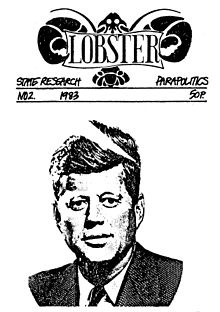The Zinoviev letter was a forged document published and sensationalised by the British Daily Mail newspaper four days before the 1924 United Kingdom general election, which was held on 29 October. The letter purported to be a directive from Grigory Zinoviev, the head of the Communist International (Comintern) in Moscow, to the Communist Party of Great Britain (CPGB), ordering it to engage in seditious activities. It stated that the normalisation of British–Soviet relations under a Labour Party government would radicalise the British working class and put the CPGB in a favourable position to pursue a Bolshevik-style revolution. It further suggested that these effects would extend throughout the British Empire. The right-wing press depicted the letter as a grave foreign subversion of British politics and blamed the incumbent Labour government under Ramsay MacDonald for promoting the policy of political reconciliation and open trade with the Soviet Union on which the scheme appeared to depend. The election resulted in the fall of the first Labour government and a strong victory for the Conservative Party and the continued collapse of the Liberal Party. Labour supporters often blamed the letter, at least in part, for their party's defeat.
Parapolitics is a term for a 2006 scandal involving Colombian politicians and the paramilitary group the United Self-Defense Forces of Colombia.

Robin Ramsay is a Scottish author, and co-founder and editor of the magazine Lobster. Ramsay writes about politics and conspiracy theories. His books have been published by HarperCollins and Pocket Essentials. His writings have resulted in him receiving death threats from the fascist group Combat 18.

Executive Intelligence Review (EIR) is a weekly newsmagazine founded in 1974 by the American political activist Lyndon LaRouche. Based in Leesburg, Virginia, it maintains offices in a number of countries, according to its masthead, including Wiesbaden, Berlin, Copenhagen, Paris, Melbourne, and Mexico City. As of 2009, the editor of EIR was Nancy Spannaus. As of 2015, it was reported that Nancy Spannaus was no longer editor-in-chief, that position being held jointly by Paul Gallagher and Tony Papert.
CovertAction Quarterly was an American journal in publication from 1978 to 2005, focused primarily on watching and reporting global covert operations. CovertAction relaunched in May 2018 as CovertAction Magazine.
Clockwork Orange was a secret British security services project alleged to have involved a right-wing smear campaign against British politicians from 1974 to 1975. The black propaganda led Prime Minister Harold Wilson to fear that the security services were preparing a coup d'état. The operation takes its name from A Clockwork Orange, a 1971 Stanley Kubrick film based on Anthony Burgess' 1962 novel of the same name.
CounterSpy was an American magazine that published articles on covert operations, especially those undertaken by the American government. It was the official Bulletin of the Committee for Action/Research on the Intelligence Community (CARIC). CounterSpy published 32 issues between 1973 and 1984 from its headquarters in Washington DC.

Lieutenant-Colonel Geoffrey Edleston Wheeler CIE CBE was a British soldier and an historian of Central Asia.
William James Owen was a British miner and Labour Party politician, whose career as a Member of Parliament was ended by his trial under the Official Secrets Act 1911 for giving secrets to Czechoslovak intelligence. Although found not guilty, it was claimed by intelligence historian Christopher Andrew in The Defence of the Realm that "he was almost certainly guilty as charged".
Commander Anthony Tosswill Courtney, OBE, RN was a British Royal Navy officer and politician. While a Member of Parliament, he was a victim of a plot apparently instituted by the KGB to discredit him, which appeared to contribute to the loss of his seat. He was a leading member of the Conservative Monday Club.

Dean Aaron Godson, Baron Godson is the Director of the London-based right wing think tank Policy Exchange.
James Richard Hougan is an American author, investigative reporter and documentary film producer.
Jonathan Moyle, the 28-year-old editor of the magazine 'Defence Helicopter World' and former RAF helicopter pilot, was found dead in room 1406 of Santiago's Hotel Carrera on 31. March 1990. His purpose in Santiago was to attend a Chilean sponsored defence conference.

The New Electric Railway Journal was a quarterly American magazine primarily about electric urban rail transit in North America, published from 1988 to 1998, with an international circulation. Its name was a tribute to a much earlier magazine with similar coverage, the Electric Railway Journal, established in 1884 and published until 1931.
Stephen Dorril is a British academic, author, and journalist. He is a former senior lecturer in the journalism department of Huddersfield University and ex-director of the university's Oral History Unit. His books have mostly been about the UK's intelligence services. In 1983, Dorril co-founded the magazine Lobster with Robin Ramsay. He has been a consultant to BBC's Panorama programme.
Anthony Edward Frewin is a British writer and erstwhile personal assistant to film director Stanley Kubrick. Frewin now represents the Stanley Kubrick Estate. His novel London Blues has been described as "masterful".
Robin Bryans was a prolific author of popular travel and autobiographical works under the pen names Robin Bryans, Robert Harbinson, and Donald Cameron. Involved with the Anglo-Irish establishment throughout his life, in his later years he achieved a degree of notoriety for allegations made about a number of public figures.
This tabulation is for periodicals which do not have their own articles.

Intercept: The Secret History of Computers and Spies is a 2015 non-fiction book by the historian and BBC journalist Gordon Corera about the history of digital covert operations. It examines the history of digital surveillance and code-breaking, and how it has transformed into modern cyberwarfare.

Norman Darbyshire (1924–1993) was a British spy who worked for the SOE and the MI6. He played a key role in the 1953 coup d'état that overthrew Mohammed Mossadegh, the democratically-elected prime minister of Iran.













